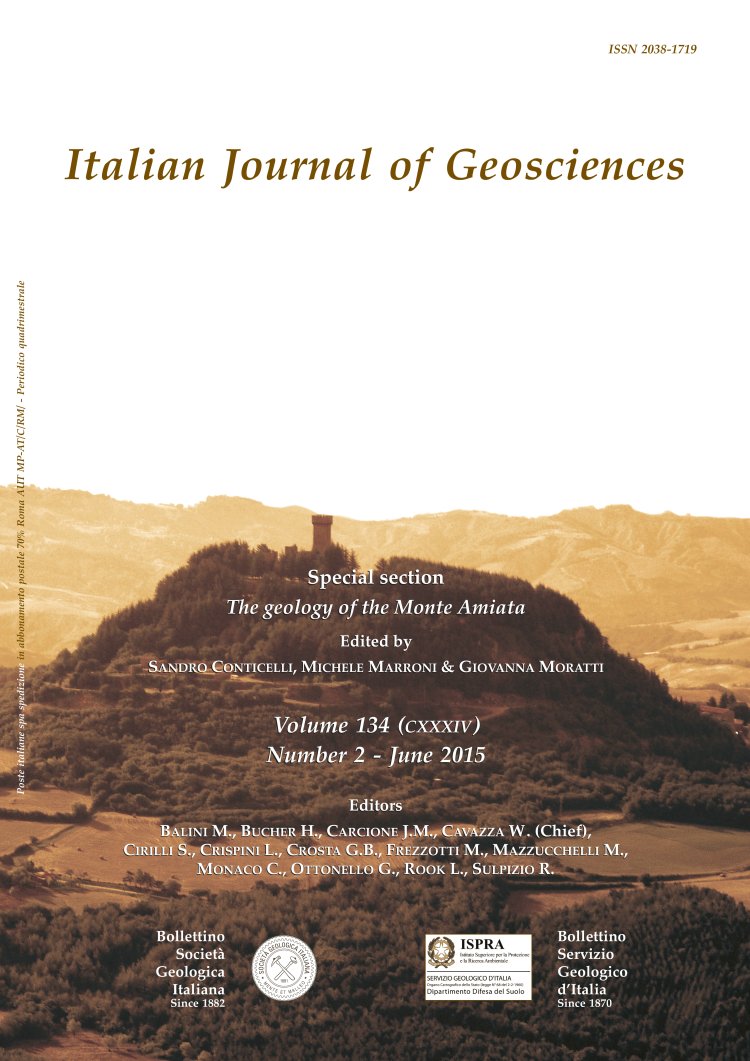
Geology of the Monte Amiata region, Southern Tuscany, Central Italy
Michele Marroni (1), (5), Giovanna Moratti (2), Armando Costantini (3), Sandro Conticelli (4), (2), Marco G. Benvenuti (4), (2), Luca Pandolfi (1), (5), Marco Bonini (2), Gianluca Cornamusini (3) & Marinella A. Laurenzi (5)
(1) Dipartimento di Scienze della Terra, Università degli Studi di Pisa, Via Santa Maria, 23 - I-56126, Pisa, Italy. E-mail: marroni@ dst.unipi.it
(2) Istituto di Geoscienze e Georisorse - UOS Firenze, Consiglio Nazionale delle Ricerche, Via Giorgio La Pira, 4 - I-50121, Firenze, Italy.
(3) Dipartimento di Scienze Fisiche, della Terra e dell'Ambiente, Università degli Studi di Siena, Strada Laterina, 8 - I-53100, Siena, Italy.
(4) Dipartimento di Scienze della Terra, Università degli Studi di Firenze, Via Giorgio La Pira, 4 - I-50121, Firenze, Italy.
(5) Istituto di Geoscienze e Georisorse, Consiglio Nazionale delle Ricerche, Via Moruzzi, 4 - I-56124, Firenze, Italy.
Abstract
Keywords
Get Full Text Supplementary Material Attached